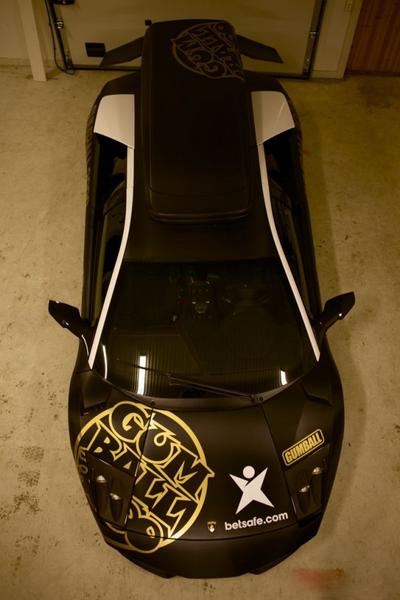i guess neither of us was completely right... Lamborghini calls it a 4 wheel drive system, but it isn't a "true 4 wheel drive" that say Jeeps have (even power distribution between all wheels). On average, 30% goes to the front and 70% goes to the rear, and the percentages vary according to driving conditions (but it isn't monitored by a computer). So it works like an awd, but lamborghini calls it a 4 wheel drive.
here's a summary:
The main feature is the permanent four-wheel drive transmission, based on the well-proven Lamborghini Viscous Traction system. Such a system, which at constant speed on homogenous adhesion roads presents a traction force distribution around 30% front, 70% rear, is conceived to be self-regulating, without the necessity of electronic controls. Indeed, thanks to the chosen characteristics of the viscous coupling, an intrinsic regulating closed loop operates in all conditions, varying the traction force distribution as a function of the dynamic weight distribution variations and of the adherence conditions.
Thus, during acceleration (or during climbing) on high adherence roads, the distribution will change favouring the rear axle (more rear traction force percentage, e.g. 80%, corresponding to the increased weight on the rear axle). However, if in these conditions the rear axle tends to lose adherence, more traction is immediately biased to the front, with the system tending to reach a point where the adhesions utilized by the two axles are identical.
























